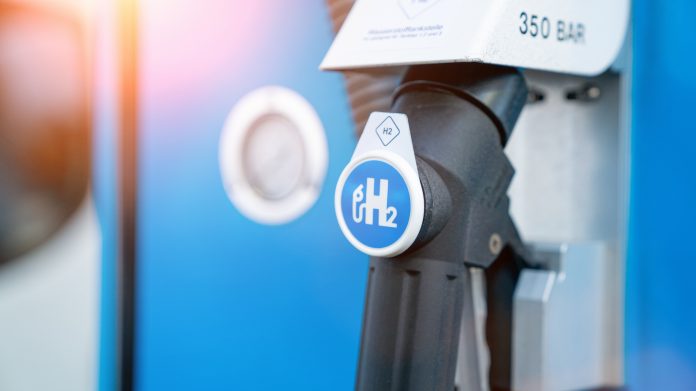Morry Markowitz, President of the Fuel Cell and Hydrogen Energy Association underscores the importance of moving forward when it comes to fuel cells and hydrogen
It is an understatement to say that 2020 has brought some unexpected twists and turns. This is evident not only in the ripples from a global pandemic, but also in the way the world is looking at the convergence between energy, the environment, innovation, and the economy. At that crux, hydrogen and fuel cell technologies have found a strong foothold and are just starting to climb.
Fuel cells and hydrogen have made quite an impact in several market sectors over the past few years, providing clean, reliable, and efficient power to communications networks, buildings and vehicles of every shape and size.
In addition to the expansions underway for current fuel cell and hydrogen markets, there are a number of emerging applications, such as medium- and heavy-duty trucking, aviation and marine vessels, that are gaining momentum, and with that, a need is growing for a stable and increasingly decarbonised hydrogen supply as well. 2020 also marked the successful tests of using hydrogen fuel cell technology for power-intensive data centres – demonstrating that hydrogen is a viable, long duration-solution for pollution-free primary and backup power.
As an energy source that is 100% domestically produced, hydrogen also has great promise to boost our national security. While today’s hydrogen is primarily derived from traditional sources such as methane or natural gas, significant work is underway today to expand decarbonised hydrogen generation including carbon capture utilisation and storage (CCUS), biogas/biomass production, and electrolysis from renewable sources such as solar and wind.
Extending capabilities to help fight COVID-19
In the early stages of quarantine, trying to tamp down the spread of COVID, the fuel cell and hydrogen industry went above and beyond the call, not only shifting production lines to manufacture masks, ventilators, critical components, and hand sanitiser, but also fuel cells to power auxiliary hospitals and equipment. Fuel cells already in the field, in forklifts, vehicles, distribution centres, grocery stores, and retail facilities, are working around the clock keeping food and other key supplies constantly moving to customers around the world. And those providing backup power for communications infrastructure have responded to multiple hurricanes, firestorms, and other grid-impacting events to keep operations and crucial infrastructure seamlessly running.
Accelerating research and adoption with the U.S. Government
In the United States, the Department of Energy (DOE) is instrumental in supporting early-stage research and development (R&D) on fuel cell and hydrogen systems and components, as well as demonstration projects that are key to proving the commercial viability of these emerging market sectors and expanding the utilisation of hydrogen across a range of applications. DOE has several offices involved in advancing fuel cell and hydrogen work and is also collaborating with other federal agencies and departments on feasibility projects.
Through DOE’s Hydrogen and Fuel Cells Technologies Office (HFTO) in the Office of Energy Efficiency and Renewable Energy (EERE) and the Solid Oxide Fuel Cell Program in the Office of Fossil Energy, there were substantial investments in a wide range of projects and new laboratory consortiums. In July 2020, 18 projects were awarded ~$64 million under the H2@Scale initiative. These included R&D work on electrolyser systems, high-strength carbon fibre for hydrogen storage tanks, and cost-effective fuel cell systems and components for medium- and heavy-duty trucks, and large-scale hydrogen demonstration projects at ports, data centres and industrial facilities.
That was followed by an announcement of $100 million, subject to appropriations, to create two new national laboratory consortia, H2NEW and the Million Mile Fuel Cell Truck (M2FCT). H2NEW will focus on large-scale electrolyser R&D and manufacturing and M2FCT’s scope on fuel cells for heavy-duty vehicle applications.
Expanding the hydrogen market
Many of these market sectors are also highlighted in the recent report from McKinsey & Company, Road Map to a U.S. Hydrogen Economy, which concludes that with the right policy support and continued investment, the United States could take advantage of the tremendous opportunities hydrogen and fuel cell technologies can provide to the country. The Road Map, launched in October 2020 by the Fuel Cell and Hydrogen Energy Association (FCHEA), was developed with the support of a group of major companies involved in the energy, utility, automotive, fuel cell and hydrogen sectors. The report details how the country could scale up activity and forecasts that the fuel cell and hydrogen industry could create approximately 700,000 jobs and $140 billion in revenue by 2030. By 2050, those numbers could grow to 3.4 million jobs and $750 billion in revenue, all while achieving substantial reductions in greenhouse gas emissions, specifically carbon dioxide levels by 16% and nitrous oxide levels by 36%.
Looking forward
Other stakeholders outside our industry are coming to realise the role fuel cells and hydrogen technologies are currently playing in boosting the economy while making a significant impact on the environment and energy security. The prospect of the practically limitless applications where fuel cells could be deployed – coupled with hydrogen’s potential for storage, grid stabilisation and decarbonisation of energy-intensive industries – is only helping expand to new markets and regions.
For the fuel cell and hydrogen industry, 2020 has been a very exciting ride and it’s showing no sign of slowing down. We can’t wait for 2021 and what it will bring.











